How to Plant and Grow a Rudbeckia Sun Hat
The colorful flowers of rudbeckia decorate the garden all summer long until the frost. The plant is valued for its unpretentious care and surprisingly bright shade of petals, which allows you to create interesting compositions on the site. For its rich color, rudbeckia also received figurative names: a golden ball and a sun hat.
Description and popular varieties
Rudbeckia belongs to the Aster family. The name of the flower contains the name of the botanist-researcher Olof Rudbek. Bright orange or yellow flowers with a clear center are placed on long stems, so rudbeckia is noticeable from afar. Its height varies from 50 to 200 cm. Rudbeckia is unpretentious, but in summer it needs abundant and frequent watering.
Popular types for the garden:
- Rudbeckia dissected - winter hardy perennial, forming dense thickets on the site. This particular species is called the golden ball for the shape of its fluffy flowers and bright yellow hue. Budding occurs by mid-summer.
- Rudbeckia hairy - the owner of terry interestingly colored flowers. There are yellow and reddish varieties with a dark brown center, bright yellow with a brown-red center.
- Hybrid rudbeckia similar to hairy, but with larger flowers. The shades are the same, but the center is more convex.
- Shiny rudbeckia - these are bright yellow flowers with a clear convex center.
Sowing seeds in open ground
Young flowers grown by the seedling method are moved to open ground at the end of May. Sometimes sowing seeds is carried out immediately on the site, in this case you need to wait until early or mid-June. Plants from seeds sown directly into a flower garden will give buds only the next year, but much earlier than seedlings.
Requirements for the place of cultivation:
- The site should be sunny, but partial shade is allowed.
- The flower is undemanding to the soil, grows well even in clayey areas. Sand is introduced into heavy soils to increase their moisture permeability. For better flowering and growth, fertile and loose soil is harvested with your own hands.
How to sow seeds in the ground:
- Shallow furrows (1-2 cm) are drawn on the soil. If several rows are made, then an interval of 20-30 cm is observed between them.
- Seeds are placed in the furrow as little as possible.
- The rows are neatly closed.
- Watering is carried out in small portions and often.
- After germination, the site is cleared of weeds and weakened rudbeckia sprouts.
- By the beginning of autumn, matured plants are transplanted 0.5 m from each other.
Seedling growing method
Sowing seedlings allows you to get flowering plants in the first year of growing. All sowing and care rules:
- Sowing time is late winter or early spring.
- The containers are filled with nutrient soil. You can take the soil directly from the site where the rudbeckia will continue to live.
- Seeds are placed in 1-2 pieces. into each container and sprinkle with earth.
- Watering is carried out using a spray bottle, as a stream of water will wash away the fragile seedlings.
- Water for irrigation should be warm and soft.
- Excess moisture is harmful to seedlings, therefore, moderation in watering is observed.
- The optimum temperature for the emergence of sprouts is 22 degrees Celsius.
- If necessary, seedlings are dived into separate containers with the appearance of 2-3 true leaves.
- Before planting in open ground, the seedlings are hardened: every day the boxes are put out on the street to get used to the new conditions.
- Transplantation to the site is carried out in warm weather towards the end of May, when night frosts pass.
How is the planting of seedlings:
- The soil for filling the planting pits is prepared from black soil and sandstone with the addition of a mineral complex.
- The distance between the holes is 30-40 cm, for tall varieties - 70 cm.
- A drainage layer is laid at the bottom, as well as a layer of compost for additional nutrition of the perennial root system.
- The planting depth of rudbeckia sprouts is the same as in the planting pot. It is impossible to close it up harder, as this will lead to rotting of the root part.
- After planting, the soil is watered and mulched with compost.
Outdoor care for rudbeckia
Rules for caring for rudbeckia in the garden:
- Rudbeckia is sensitive to a lack of moisture, especially during the period of active growth. Watering should be frequent and abundant.
- After each moistening, the soil is loosened and cleaned of weeds.
- If in the first days after planting in a flower garden it gets very cold at night, young plants are protected with a film or covering material - until the moment when they start growing.
- High grades require support.
- Twice a season, rudbeckia is fed with a standard complex for flowering plants: the first time - at the growth stage, the second - at the time of ovary formation. Nutrients are added during watering.
- All wilted inflorescences are removed.
- Before wintering, the rudbeckia is cut to the root. The lower part of the plant is perfectly preserved under the snow. Additional insulation - mulching the soil with humus, spruce branches, hay, dry grass.
- Once every 3-5 years, rudbeckia is transplanted to a new place, since its root system is prone to overgrowth and clogging of the site. The bush must be dug up, divided into several parts and transplanted.
Diseases, pests and their elimination
What solar rudbeckia suffer from:
- A loose white coating is a sign of a fungal disease called powdery mildew. It is necessary to replace the topsoil, remove damaged areas and spray the plant with a solution of colloidal sulfur (1%).
- Nematodes are insect pests that cause yellow and brown spots on foliage. All damaged leaves are removed from the bush, the plant is treated with an insecticide.
- The fungal disease rust appears as orange blisters on the leaves. A fungicide agent will help to save the bush.
Preventive measures: correct watering, weeding the soil, loosening, fertilizing, timely removal of fallen and affected parts. If most of the plant is damaged, it is dug up and burned, and the soil on the site is treated with a strong solution of potassium permanganate.
Placing rudbeckia on the site: tips
The advantage of rudbeckia is that it will grow both in sunny and shaded places. The flower is used as part of a multi-tiered flower bed (its level is determined by the height of a particular variety). Hedges are grown from tall varieties. Low-growing rudbeckia are used to frame paths.
Good neighbors for rudbeckia:
- echinacea (often these two plants are confused, the main difference between rudbeckia is yellow-orange color, in echinacea it is pink, and in echinacea it has a spiny bract);
- garden chamomile;
- aster;
- chrysanthemum;
- cereals.
The golden balls on the site create a warm, sunny atmosphere. Rudbeckia can be a bright center of a composition of flowers and cereals, emphasize the beauty of garden buildings, outline the boundaries on the site and arrange paths. Simple care rules make this plant even more attractive, especially for beginners in floriculture.
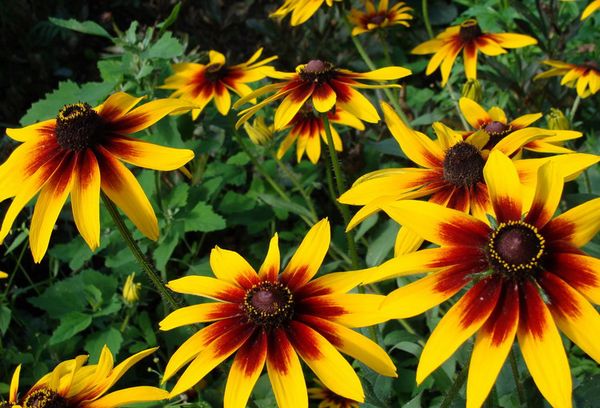

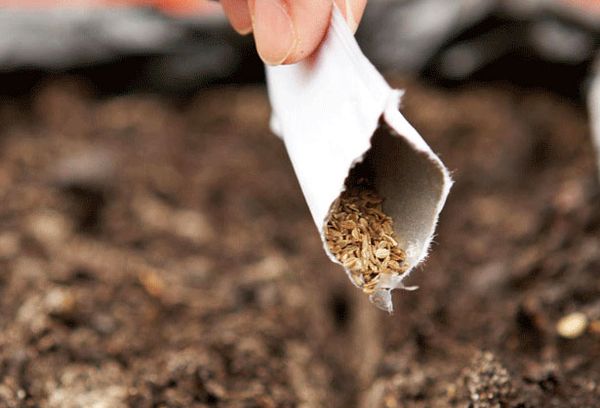

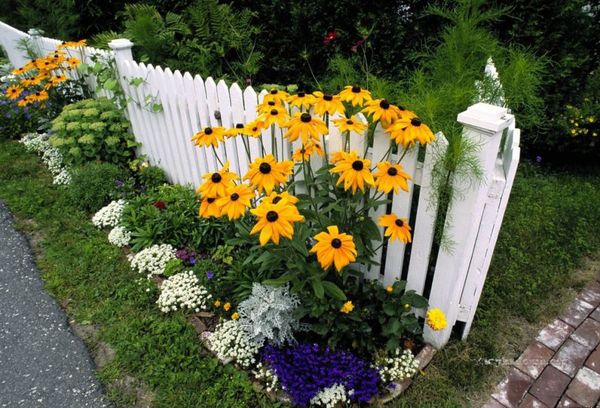
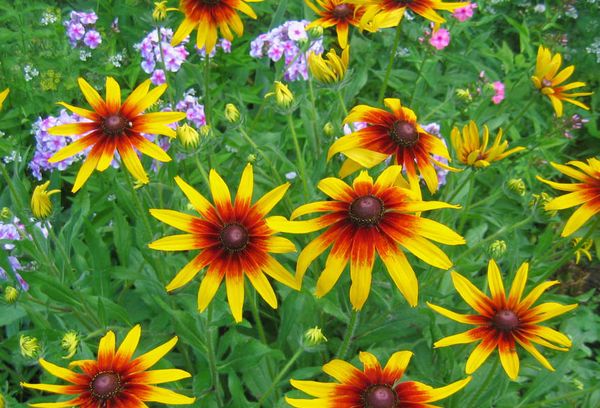
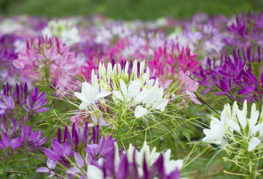
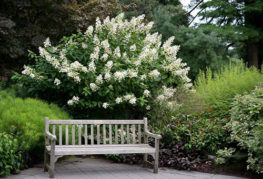

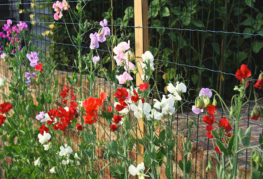
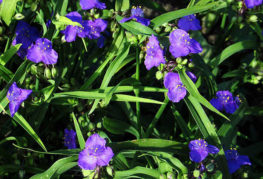
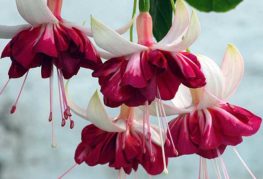
and will be published shortly.